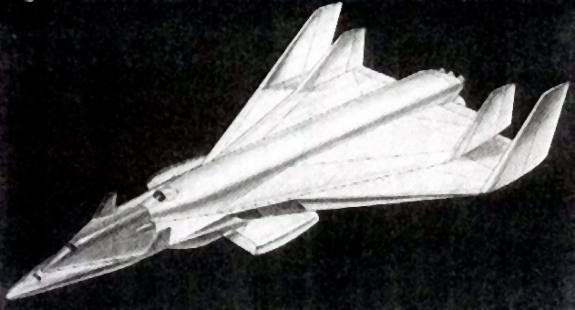
Home - Search - Browse - Alphabetic Index: 0- 1- 2- 3- 4- 5- 6- 7- 8- 9
A- B- C- D- E- F- G- H- I- J- K- L- M- N- O- P- Q- R- S- T- U- V- W- X- Y- Z
Lockheed Space Taxi

Recoverable Booster
Credit: NASA
Status: Study 1963.
Lockheed investigated the economics of reusable launch vehicles for crews and light space station cargo during the early 1960s. Anticipated space activities in the 1970s included a two-phase Earth-orbital space station program, a lunar base, and early Mars mission plus later Mars/Venus mission... Since the baseline "System I" 6-man Apollo CSM/Saturn-IB vehicle appeared to be uneconomical as a high-volume manned transportation system even if the crew capsule could be reused 10 times, Lockheed proposed a "System II" that would have retained the Saturn IB booster but replaced the Apollo with a new reusable 10-man spaceplane. This third stage spaceplane was standard for Systems III & IV as well.
The fully reusable options were a "System III" HTHL TSTO rocketplane & "System IV" airbreathing HTHL TSTO ramjet-rocketplane. System IV was otherwise identical to System III but used a different booster aircraft with in-flight LOX collection + ramjet propulsion Both vehicles would be launched from a ground accelerator sled and fly orbit-once-around missions to deploy the small DynaSoar-like interorbital third stage "space taxi" containing the crew & cargo.
The System III & IV requirements were as follows: 95% mission reliability (0.1% vehicle attrition rate). 2950kg payload & 10 passenger capability. 7.5 day min. turnaround between missions (11-23 days nominal). Mission life of 500 flights. Flight rates of 100-300 missions per year in 1973-80. The estimated costs were in the $6.8M (50 flts/yr.)-$1.275M (400 flts/yr.) range. These figures were in FY 1964 dollars; the inflation-adjusted cost in 1999 would be $6.85M - $36.5M per flight. System III & System IV appeared to be equally cost competitive, but the development cost/risk would be lower for the all-rocket booster concept depicted above.
As for the low flight rate options, System II would have cost $0.6 billion (1964 $) for 250 passengers/year vs. $0.95 billion for the System I Saturn/Apollo since the manned spacecraft could be reused 500 times vs. only ten reuses for the Apollo capsule.
Masses: System III booster (161.750t dry / 646.823t gross) & orbiter (33.475t / 167.376t). Orbiter would perform "orbit once around" after deploying Dyna Soar type mini-shuttle (7166kg / 12700kg). System IV was otherwise identical but used a different booster aircraft with in-flight LOX collection + ramjet propulsion (113.4 t / 217.724t mass).
Crew Size: 10.
Family: Spaceplane, US Rocketplanes. Country: USA. Launch Vehicles: Recoverable Booster Systems for Orbital Logistics. Agency: Lockheed. Bibliography: 521.
Back to top of page
Home - Search - Browse - Alphabetic Index: 0- 1- 2- 3- 4- 5- 6- 7- 8- 9
A- B- C- D- E- F- G- H- I- J- K- L- M- N- O- P- Q- R- S- T- U- V- W- X- Y- Z
© 1997-2019 Mark Wade - Contact
© / Conditions for Use